Best PowerShell Comparison Tools to Buy in December 2025
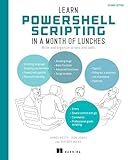
Learn PowerShell Scripting in a Month of Lunches, Second Edition: Write and organize scripts and tools


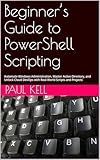
Beginner’s Guide to PowerShell Scripting: Automate Windows Administration, Master Active Directory, and Unlock Cloud DevOps with Real-World Scripts and Projects


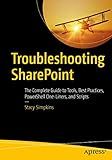
Troubleshooting SharePoint: The Complete Guide to Tools, Best Practices, PowerShell One-Liners, and Scripts



AWS Tools for PowerShell 6: Administrate, maintain, and automate your infrastructure with ease


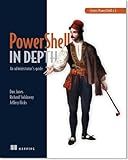
Learn PowerShell Toolmaking in a Month of Lunches


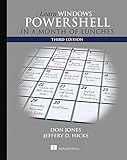
Learn Windows PowerShell in a Month of Lunches



PowerShell Advanced Cookbook: Enhance your scripting skills and master PowerShell with 90+ advanced recipes (English Edition)



PowerShell for Sysadmins: Workflow Automation Made Easy


In PowerShell, you can compare different objects using comparison operators such as -eq (equals), -ne (not equals), -gt (greater than), -lt (less than), -ge (greater than or equal to), and -le (less than or equal to). These operators allow you to compare objects and determine their relationship to each other based on specific criteria. By using these operators in combination with conditional statements, you can automate the process of comparing objects and making decisions based on the results of the comparison. This can be particularly useful when working with data sets, arrays, or other collections of objects in PowerShell scripts.
How to compare directories in powershell?
To compare directories in PowerShell, you can use the Compare-Object cmdlet. Here is an example of how to compare two directories:
- Open PowerShell.
- Use the following command to compare the contents of two directories:
Compare-Object -ReferenceObject (Get-ChildItem -Path C:\Directory1) -DifferenceObject (Get-ChildItem -Path C:\Directory2)
Replace C:\Directory1 and C:\Directory2 with the paths of the directories you want to compare.
- The output will show the differences between the two directories, including which files exist in one directory but not the other.
You can also use the -SyncWindow parameter with the Compare-Object cmdlet to specify the maximum number of adjacent items that can be considered as "equal" in both directories.
For more advanced comparison options, you can refer to the documentation for the Compare-Object cmdlet by running Get-Help Compare-Object in PowerShell.
How to compare files based on name in powershell?
To compare files based on their names in PowerShell, you can use the following steps:
- Use the Get-ChildItem cmdlet to retrieve a list of files in the directory you want to compare. For example, if you want to compare files in the "C:\Files" directory, you can use the following command:
$files = Get-ChildItem -Path C:\Files
- Use the Sort-Object cmdlet to sort the files by their names. This will ensure that the files are in the same order for comparison. For example, you can sort the files by their names in ascending order using the following command:
$sortedFiles = $files | Sort-Object -Property Name
- Once you have sorted the files, you can loop through the files and compare them based on their names. You can use the Compare-Object cmdlet to compare the names of the files. For example, you can compare two sets of files using the following command:
Compare-Object -ReferenceObject $sortedFiles1 -DifferenceObject $sortedFiles2 -Property Name
This will compare the two sets of files based on their names and display the differences between them.
How to compare two numbers in powershell?
To compare two numbers in PowerShell, you can use conditional statements such as if, elseif, else, switch, or the comparison operators -eq (equal), -gt (greater than), -lt (less than), -ge (greater than or equal to), -le (less than or equal to), -ne (not equal).
Here is an example of comparing two numbers in PowerShell:
$number1 = 10 $number2 = 20
if ($number1 -gt $number2) { Write-Host "Number 1 is greater than Number 2" } elseif ($number1 -lt $number2) { Write-Host "Number 1 is less than Number 2" } else { Write-Host "Number 1 is equal to Number 2" }
In this example, we are comparing two numbers (10 and 20) using the -gt and -lt comparison operators to determine if Number 1 is greater than, less than, or equal to Number 2. Alternatively, you can use other comparison operators and conditional statements to compare numbers based on your requirements.
How to compare directories based on size in powershell?
To compare directories based on size in PowerShell, you can use the following command:
$dir1 = "C:\path\to\directory1" $dir2 = "C:\path\to\directory2"
$dir1Size = (Get-ChildItem $dir1 -Recurse | Measure-Object -Property Length -Sum).Sum $dir2Size = (Get-ChildItem $dir2 -Recurse | Measure-Object -Property Length -Sum).Sum
if ($dir1Size -gt $dir2Size) { Write-Output "$dir1 is larger than $dir2" } elseif ($dir1Size -lt $dir2Size) { Write-Output "$dir2 is larger than $dir1" } else { Write-Output "$dir1 and $dir2 are the same size" }
In this script, replace the $dir1 and $dir2 variables with the paths to the directories you want to compare. The script calculates the total size of each directory by summing the lengths of all files within them. It then compares the sizes of the directories and outputs a message indicating which directory is larger or if they are the same size.
What is the purpose of the -notlike operator in powershell?
The -notlike operator in PowerShell is used to compare a string value with a pattern and return true if the string value does not match the pattern. It is the opposite of the -like operator, which returns true if the string value matches the pattern. This operator is commonly used in conditional statements to filter out specific values that do not meet a certain criteria.
How to handle null values when comparing objects in powershell?
When comparing objects in PowerShell, you can use the -eq operator to check if two objects are equal. However, if one or both of the objects are null, the comparison may not behave as expected.
To handle null values when comparing objects, you can use the -ne operator to check if the objects are not equal and handle the null values separately. Here is an example:
$object1 = $null $object2 = "value"
if ($object1 -eq $object2) { Write-Output "Objects are equal" } elseif ($object1 -ne $null -or $object2 -ne $null) { Write-Output "Objects are not equal" } else { Write-Output "Both objects are null" }
In this example, it first checks if the objects are equal. If they are not equal, it then checks if either object is not null. If both objects are null, it will output that information.
You can modify this logic based on your specific requirements for handling null values when comparing objects in PowerShell.
